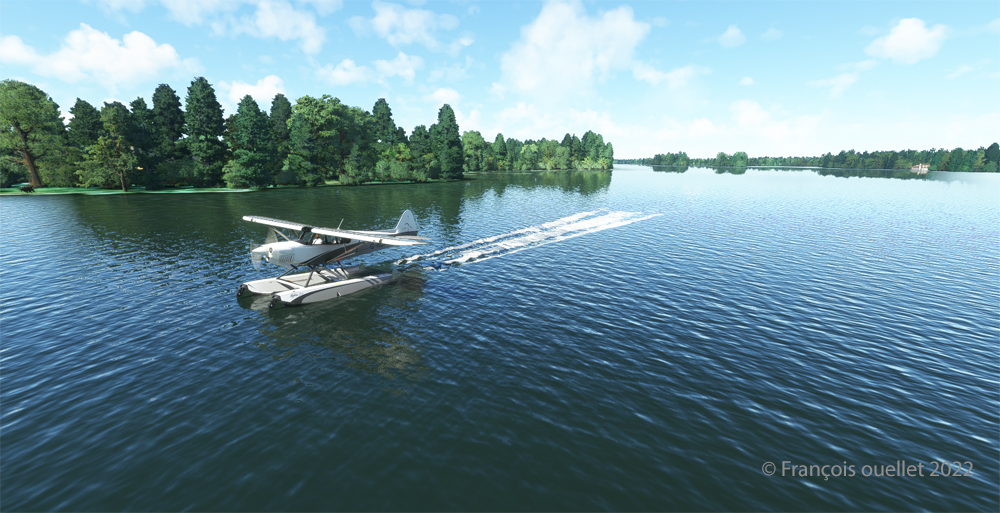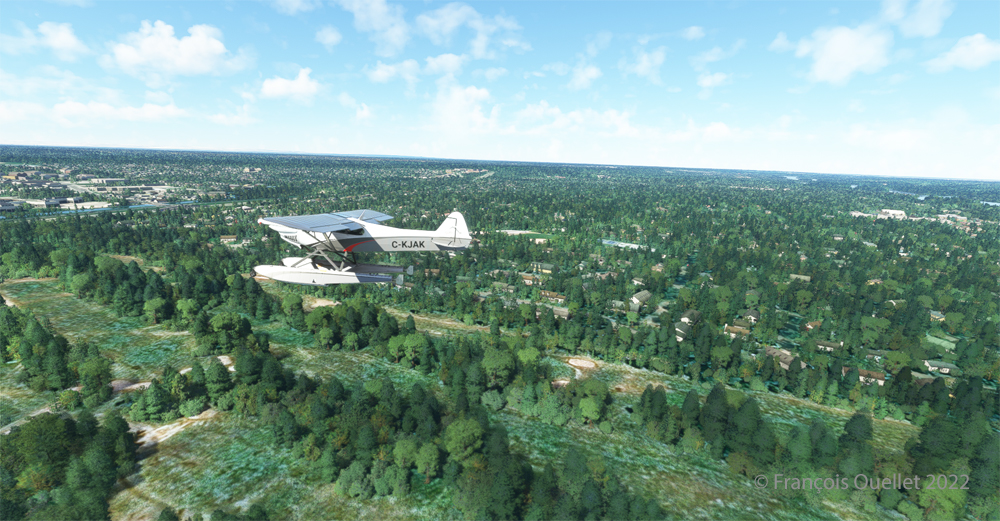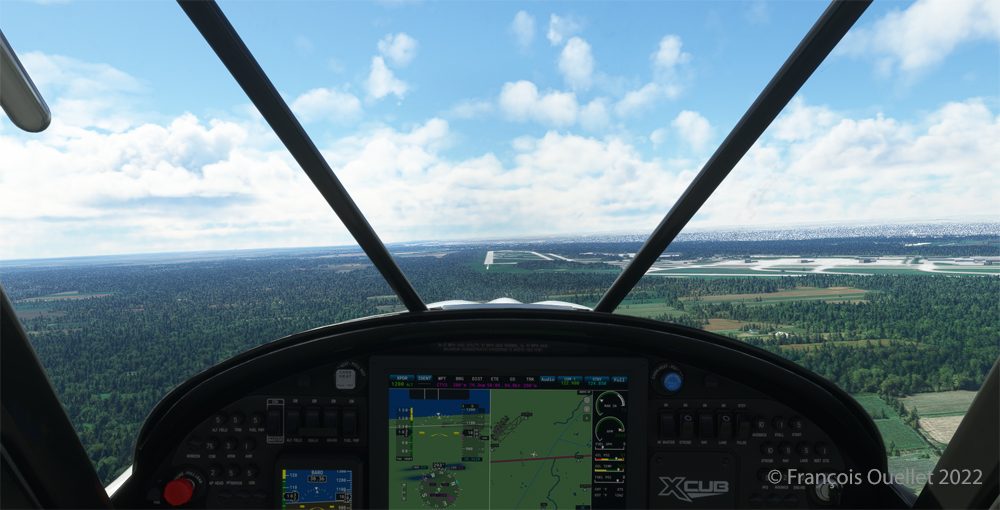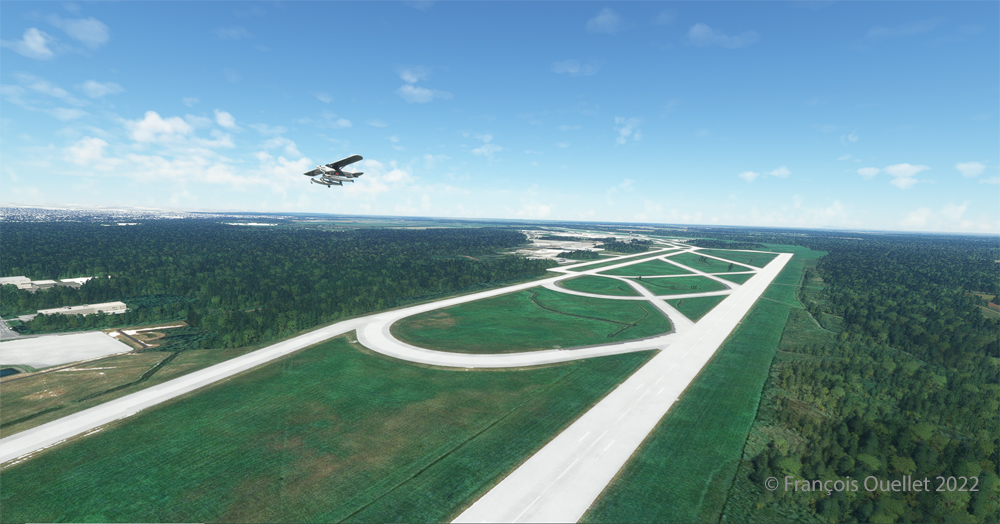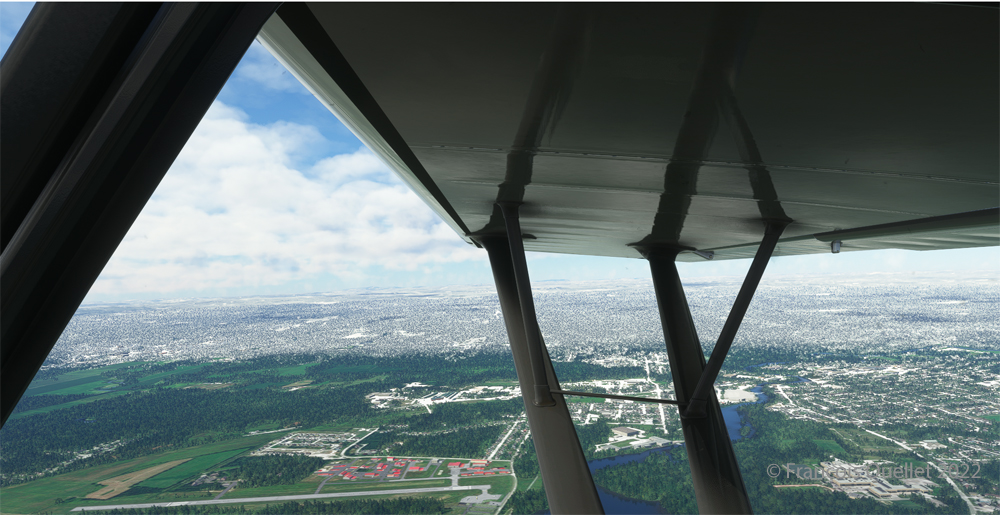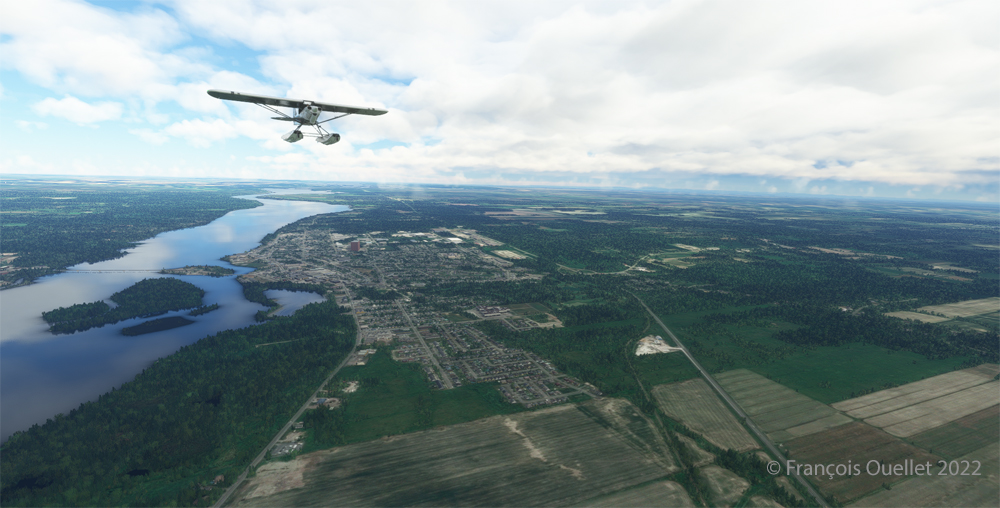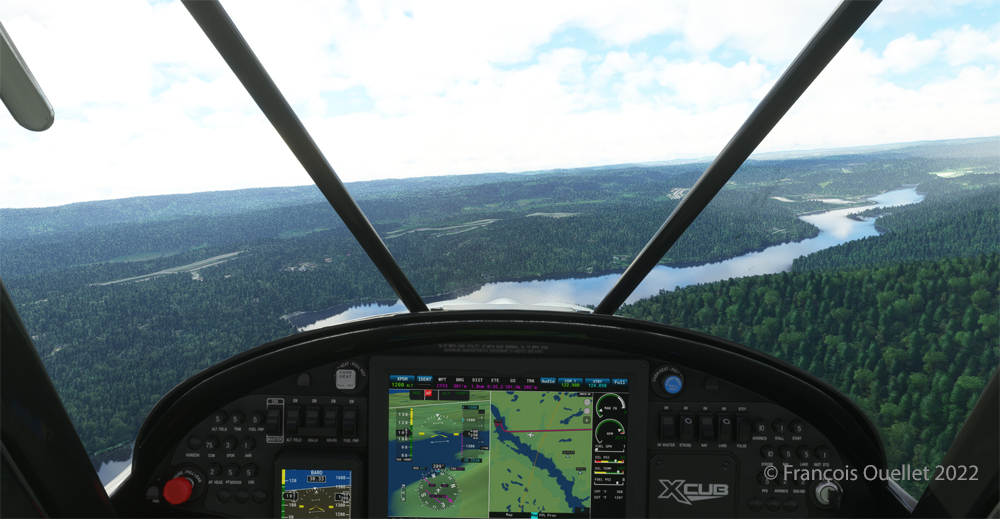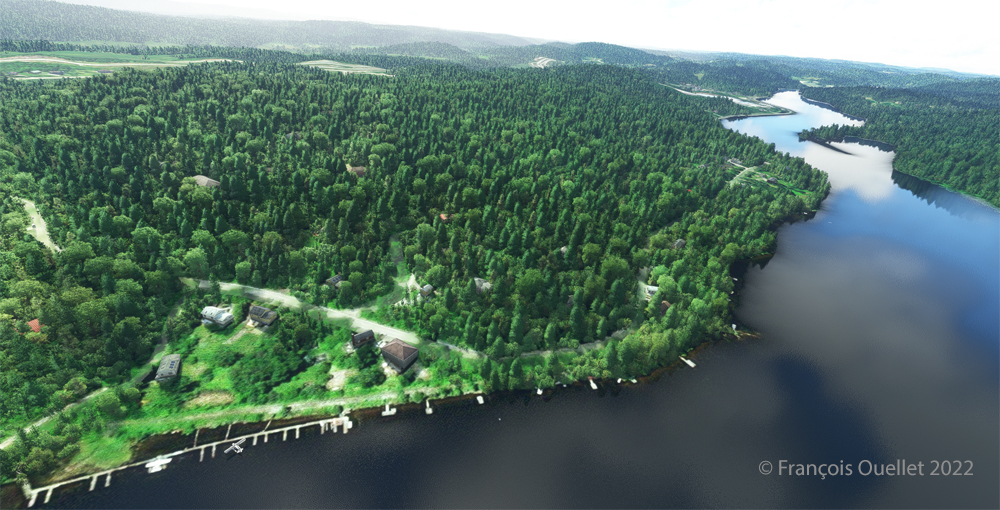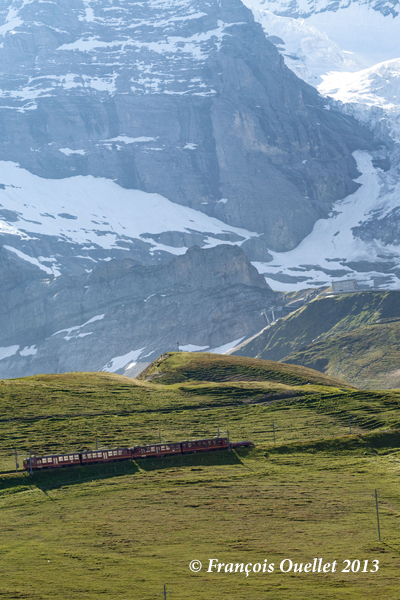
Ten years ago this year, we took the train to the Jungfraujoch Top of Europe station.
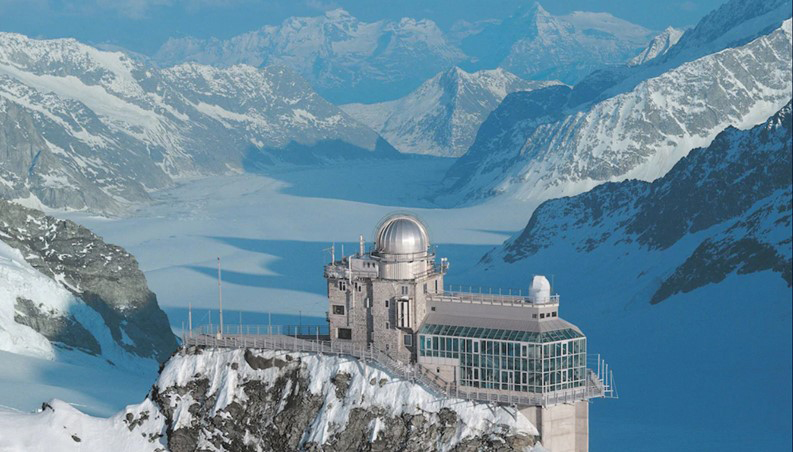
The latter is located in the Jungfraujoch pass in Switzerland, at an altitude of 3571 meters (11,716 feet MSL).
The construction of this station was a feat of engineering at the time, but cost the lives of many workers. One does not make one’s way through a mountain range with sticks of dynamite without the occasional unforeseen agenda imposed by nitroglycerine.
The train can therefore only reach this station by traveling inside the mountains on a steep slope requiring a hydraulic mechanism to pull the train forward. The tourist must trust the engineers and the technical support…
To remind myself of our trip to this region, I thought of taking a virtual helicopter flight from Lauterbrunnen to land directly on the platform of the Sphinx astronomical observatory, this world famous tourist attraction of the Jungfraujoch. Fortunately for me, the company Red Wing Simulations recently created a virtual scene including these two magnificent sites.
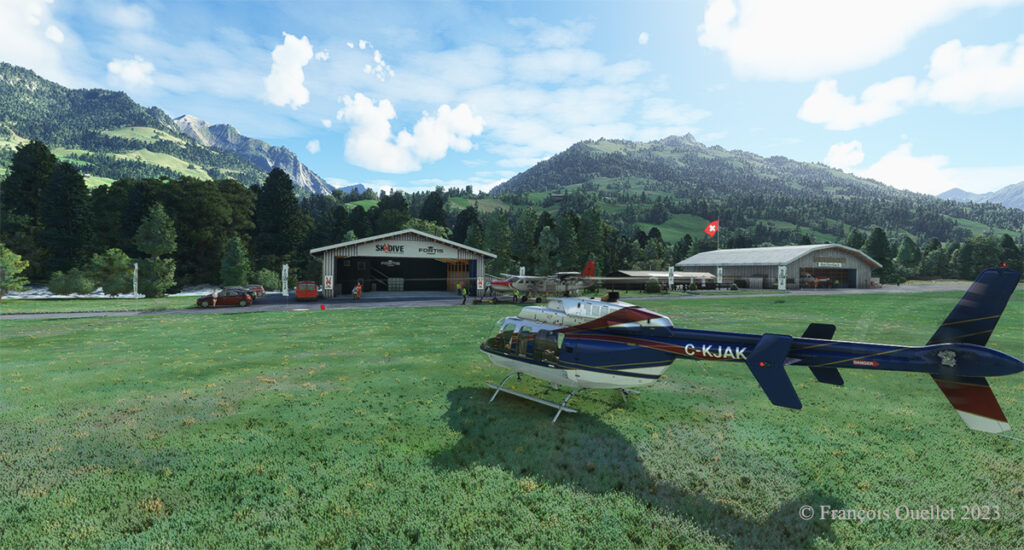
Flight simulation enthusiasts will be well advised to use the Bell 407, as the operating limit of the Guimbal Cabri G2 provided by the Microsoft flight simulator is capped at 13,000 feet. It is best to fly with a slightly more powerful aircraft when maneuvering at this altitude.
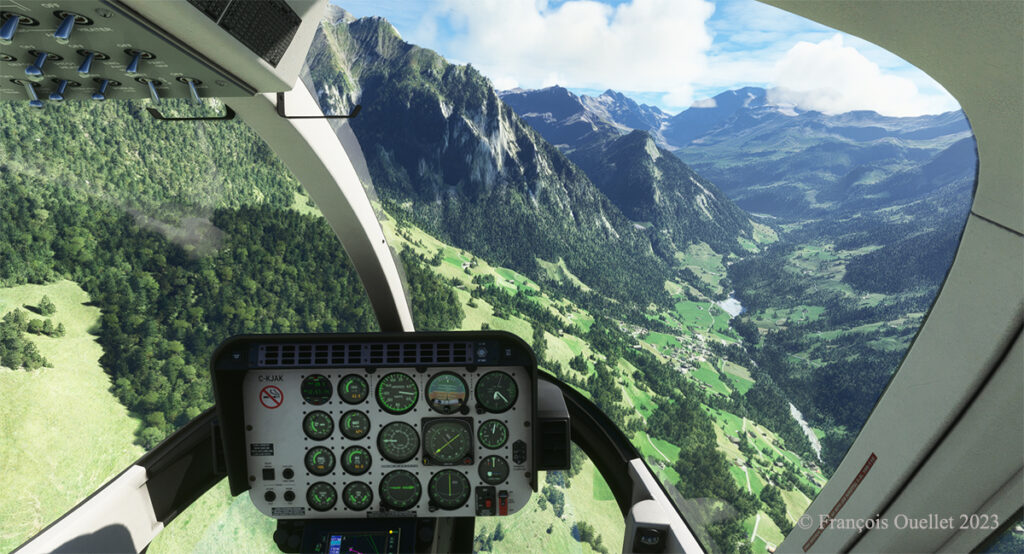
From a green landscape in the summer one gradually flies towards the eternal snow of the highest peaks in the Valais.
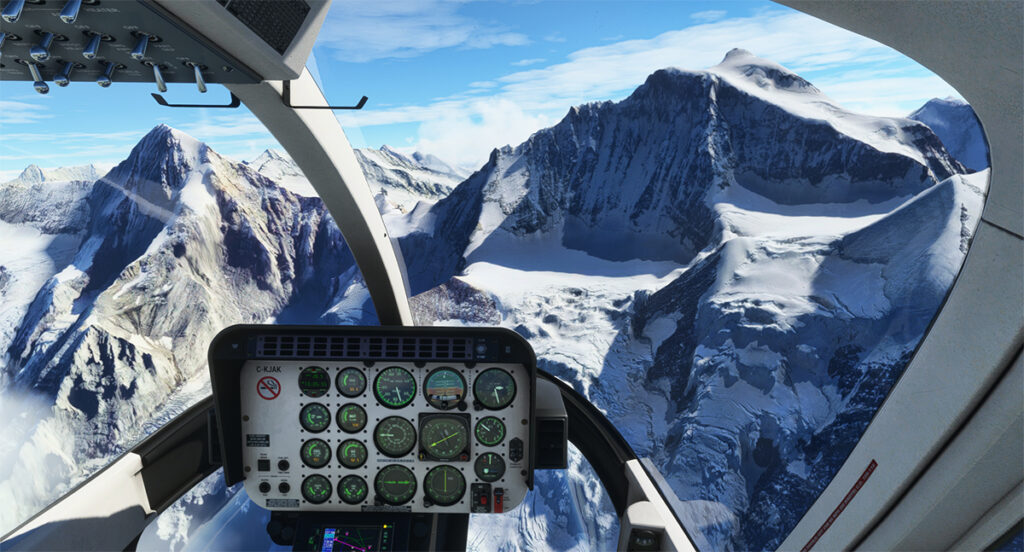
The scenery was spectacular on the train and it is just as spectacular in virtual flight. A mechanical problem with the helicopter in this environment of grandiose cliffs would leave little chance for the pilot.
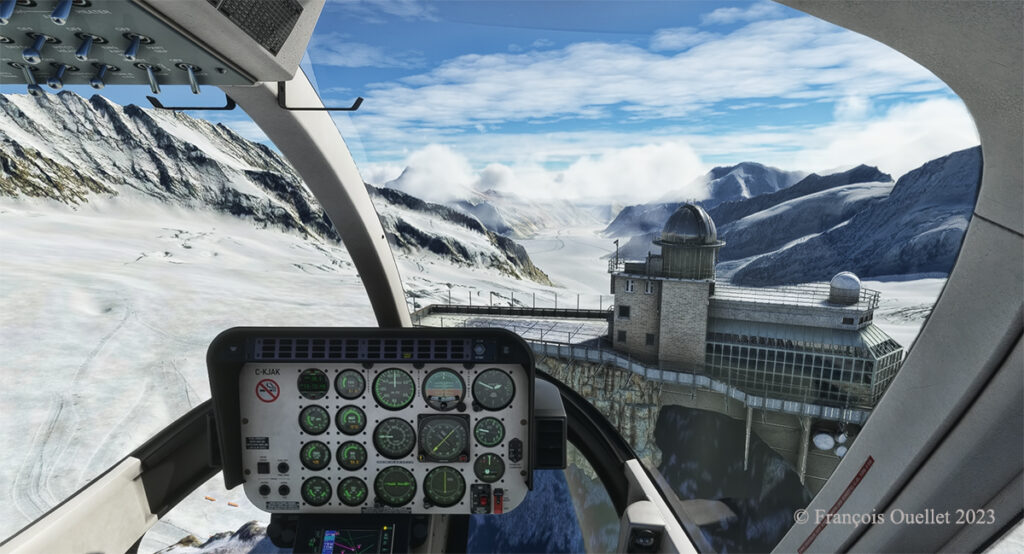
Here we are on approach: it is possible to land on the platform of the Sphinx observatory, but the pilot needs to be prepared for wind shear and unforeseen clouds at this altitude while taking care during the approach to avoid touching the flagpole and the protective fences surrounding the platform.

The Red Wing Simulations company has done an outstanding job designing this virtual scenery. In the photo below, you can even see skiers at the bottom of the cliff warming up before their first run.
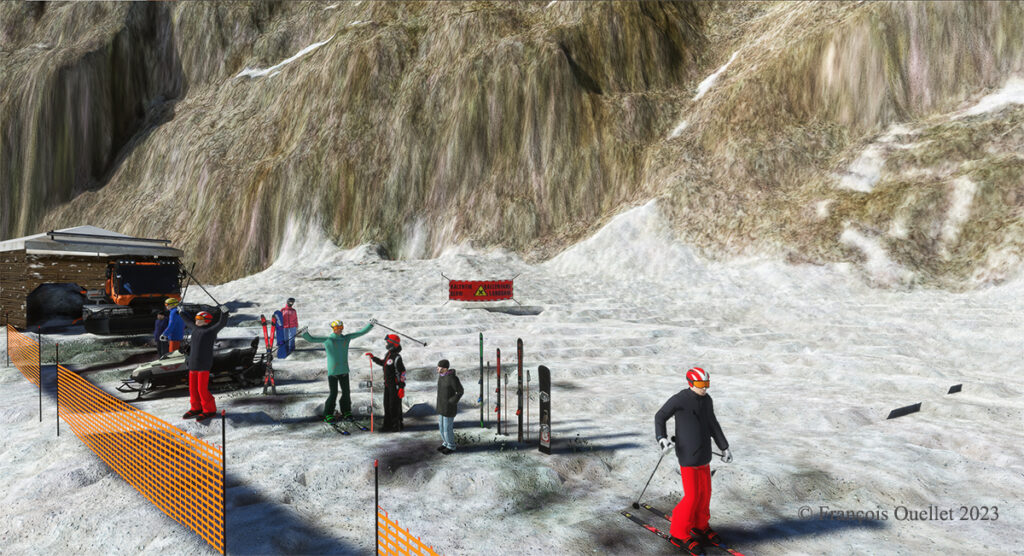
Even if the virtual scene includes something other than Lauterbrunnen and the Jungfraujoch, the pleasure of making a successful approach on the Sphinx platform alone is worth the cost of acquiring the software.
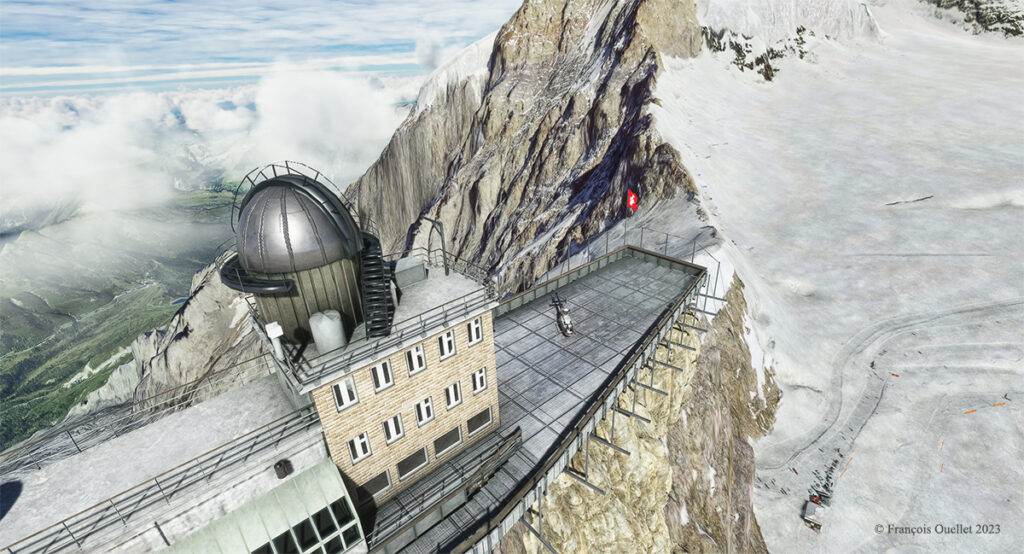
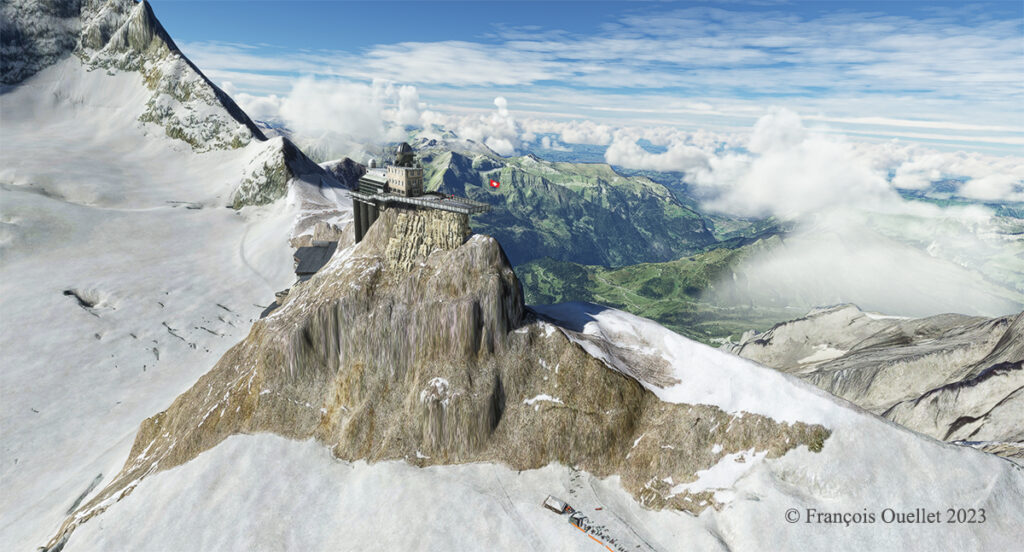
Click on the links for more challenging virtual flights or flight simulation information on my blog.
